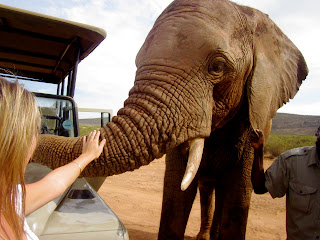Elephants Conservation Status
The International Union for Conservation of Nature (IUCN) has created a listing protocol to establish an inventory of biological species. The ranking system incorporates colors and abbreviations to make the listing comprehensive and easily understandable. Starting with LC (least conerning) and moving to EX (extinct) the labeling provides an easy system for most people to understand where a given species lies.
The redlist established by IUCN is a range of vulnerable, risk of extinction, and extreme risk of extinction. The two main species of elephant find themselves within the threatened portion of this bracket. The African elephant is marked at VU (vulnerable) while the Asian elephant is marked EN (endangered). The African elephant population was recorded to be around 10 million in 1900 and has dropped to about 600,000 in 1990. Likewise the Asian elephant population has been reduced to around 30,000-40,000 living members.
There are several main contributing factors that have led to the dramatic reduction of the elephant population worldwide. Many Eastern countries place high value on ivory obtained from elephant tusks which has created a high demand that can only be satisfied by poaching elephants and removing their tusks once dead. Human population growth has led to deforestation and habitat reduction across much of the elephants original territory. Their migration paths have been blocked and fenced off leaving them with inadequate access to resources such as water and food. Unfortunately this restriction of land forces elephants into agricultural areas where they often fall victim to death by gunshots when farmers wish to protect their crops. They are also hunted by Africans that have unstable food supplies and rely on them to prevent starvation.
There are many conservation agencies that are busy at work to rebuild the elephant population and prevent further destruction of habitat. The US has granted several million dollars toward elephant conservation in hopes of warding off extinction. The elephant population as a whole has seen an increase in number over the past decade thanks to these efforts and with growing support it is projected that they will slowly move down the IUCN red list in the future.
Sources:
http://www.elephantconservation.org/
http://www.fws.gov/international/DIC/pdf/Afe_fs.pdf
http://www.iucnredlist.org/
Thursday, April 19, 2012
Tuesday, April 17, 2012
Empirical Study - "Elephants know when they need a helping trunk in a cooperative task"
A recent study from Frans B. M. de Waal et al. (2011)
demonstrated the cognitive understanding to effectively to be aware and perform
cooperative tasks in elephants. The researchers paired 12 elephants into 6
unique pairs to participate in a task that required coordinated pulling. This
task was previously used to study cooperation in chimpanzees, requiring the
involvement of two chimpanzees to lift a heavy weight by rope instead of only
one chimpanzee. A single rope was threaded around the weight apparatus such
that pulling on one end would only move the rope, not the weight, making the
other end of the rope unavailable to the other partner. There were two
conditions for this study: simultaneous release – where both elephants were
released together from 10 meters back from the rope ends; and a delayed release
– where one elephant would be released before the other, requiring a learning
condition for the first elephant to wait for the second in order to perform the
task correctly. This learning was taught by shaping procedures using
consecutively longer intervals. All six elephants were highly successful in
waiting for their partners across the 60 trials, and only increased in the
longer delays after the first day, suggesting quickly learned contingency of
the task regardless of the length of waiting time. The elephants inhibited their
pulling response for delays up to 45 seconds, and learned that cooperation, the
requirement of simultaneous pulling of the rope from both ends, was necessary
to obtain the reward. These results provide ample demonstration of
understanding cooperation. The researchers believe that through convergent
evolutions, elephants may have reached a cooperative skill level equivalent to
chimpanzees
http://0-www.pnas.org.sally.sandiego.edu/content/108/12/5116.full
Wednesday, April 4, 2012
Videos and Pictures of Elephants
(Sorry about the talking in the background!)
This is a video and some pictures that I took of African Elephants while on a safari at the Aquila Reserve right outside of Cape Town, South Africa.
... And these are some more pictures that I took at the local San Diego Zoo!
Subscribe to:
Comments (Atom)








